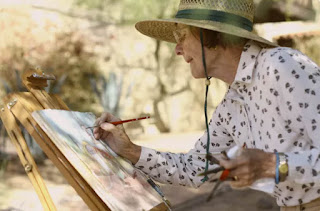One of the most impressive of those sites was the Sistine Chapel in Vatican City, in Rome. I still remember being told to lie on my back in one of the pews and take in Michelangelo’s awe-inspiring ceiling. When I did get back as an adult the chapel was much more crowded and not at all peaceful as a chapel should be. While it was still inspiring, I had to concentrate to block out all the voices. Today, 20,000 people visit the Chapel everyday!
Today it is best known for its art with its frescos covering 11,840 square feet. The famous artists of the time including Sandro Botticelli, Pierrot Perugino and Domenico Ghirlandaio worked on the paintings on the side walls but the cieiling remained blue with scattered stars until Pope Julius II commissioned Michelangelo (1475-1564) to paint it in 1508. Believing his forte was as a sculptor and occupied with the tomb of Pope Julius II, Michelangelo turned down the offer. At the Pope’s insistence, however, he agreed, but it took him 4 years to complete the program of episodes from the Old Testament.
In an online entry for “Private Guides to Rome” I was reminded that Michelangelo built his own scaffold and did not lie on it as has often been said but stood as he painted. Until this time God was usually represented with a hand pointing down through the clouds but in Michelangelo’s Creation of Adam one finds the first representation of God as a muscular body and face with a long white beard like the Greek god Jupiter.
At the behest of Pope Clement VII Michelangelo returned in 1535 to paint the Last Judgemnt. He covered the entire wall behind the altar with the Second Coming of Christ and the final and eternal judgment of all humanity completing it in 1541. Just like today, no good deed goes unpunished, after Michelangelo accomplished this major feat, they started to go after him. Cardinal Gian Pietro Carafa said the naked figures were immoral and obscene. He and others launched the “Fig Leaf Campaign” to remove the fresco. Later in the century the artist Daniele da Volterra covered up the genitals.
 |
| Photo by Francisco Anzola |























